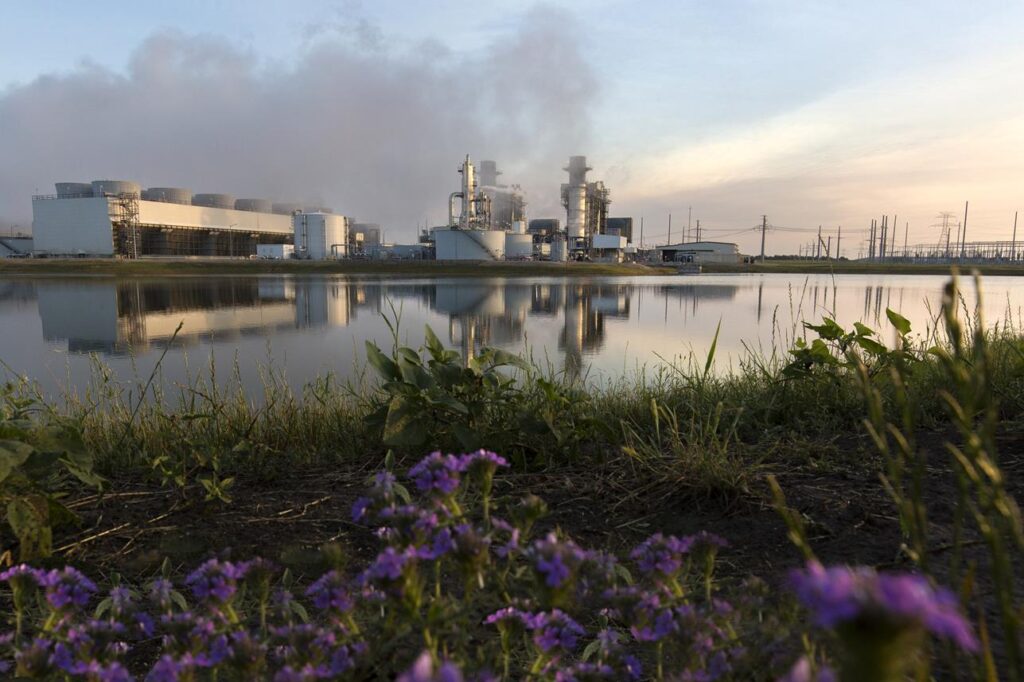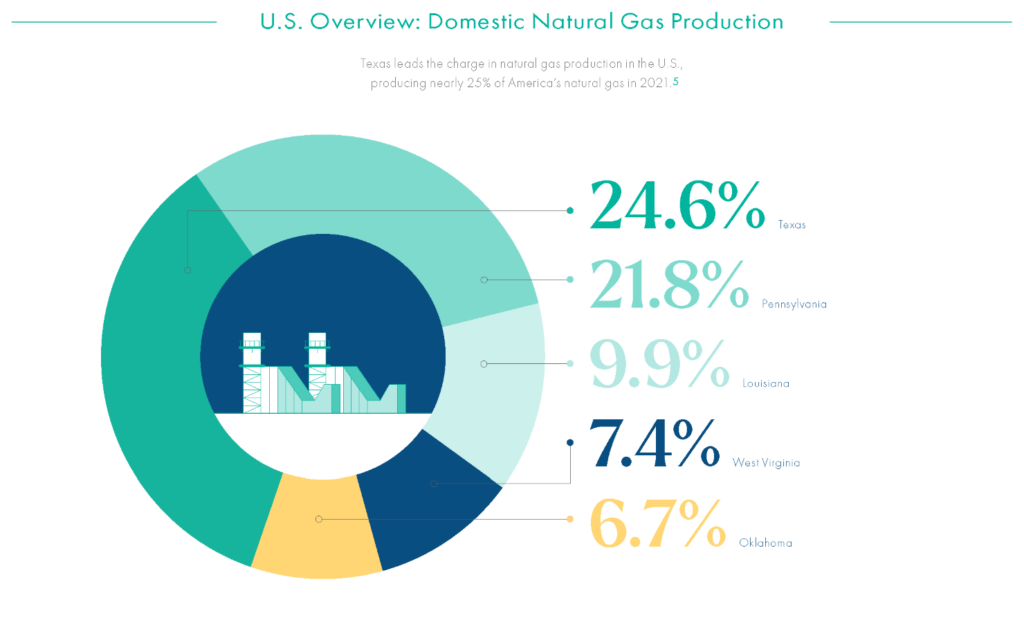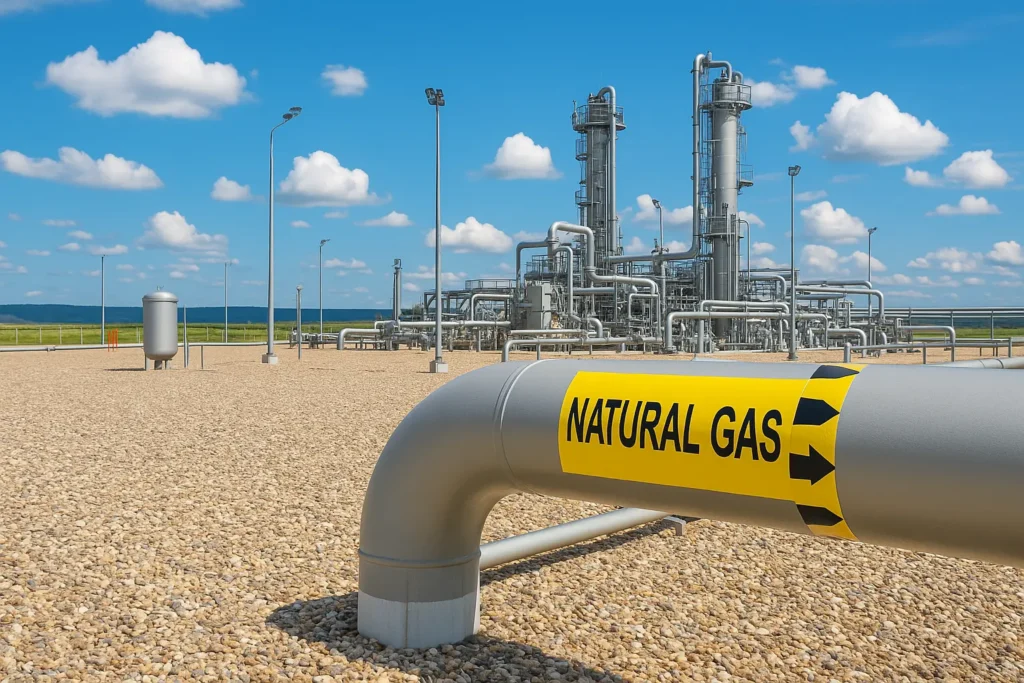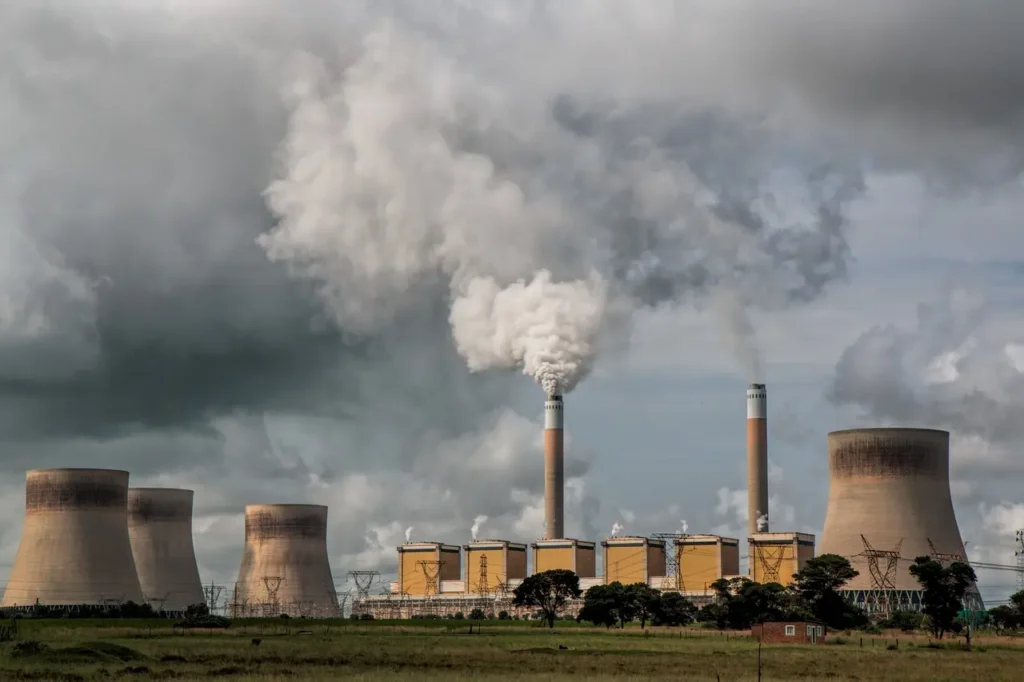How Many Natural Gas Plants Are in Texas
3 minute readHow many natural gas plants operate in Texas? How many more are proposed amid surging energy demand?
Home > Learning Center > Energy Production > Where Does Natural Gas Come From?
4 minute read • Last update February 2024

Natural gas is a fossil fuel that is primarily formed in underground reservoirs deep beneath the Earth’s surface. It is formed over millions of years through a geological process that involves the decomposition of organic matter. Here’s the natural gas formation process occurs:
Natural gas originates from the remains of ancient marine plants and microorganisms. These organisms, which lived in the oceans and bodies of water, accumulated at the bottom over millions of years. As they died, their organic matter sank and mixed with sediment.
As the layers of sediment and organic material accumulated over time, they became buried under more and more sediment. The immense pressure and heat from the Earth’s crust caused a transformation of the organic material. This process, known as thermal maturation or diagenesis, gradually turned the organic matter into hydrocarbons, which include natural gas.
The main component of natural gas is methane (CH4). Methane is created through the thermal cracking of the organic material. It results from the breakdown of complex hydrocarbons into simpler compounds, and it becomes trapped within the pores of rock formations.
Over time, as methane is formed, it can migrate upward through porous rocks, but it is often trapped by impermeable geological formations. These formations, such as shale, sandstone, or limestone, act as natural containers for the gas, preventing it from escaping to the surface.
To access natural gas, exploratory drilling is carried out to identify suitable reservoirs. Once a potential deposit is located, production wells are drilled to extract the gas. The extracted gas is then transported via pipelines or other means to distribution points for various uses.
Natural gas reservoirs or deposits can be found all across the globe. Natural gas reservoirs can be found on land and offshore, beneath the ocean floor. Some of the largest natural gas reserves are located in regions like the Middle East, Russia, the United States, and various other parts of the world.
The accessibility and economic viability of extracting natural gas from these reservoirs depend on factors such as the depth of the reserves, geological conditions, and the proximity to infrastructure for transportation and distribution.
Natural gas reserves are distributed across the globe, with significant deposits found in various regions. The world’s natural gas reserves are concentrated in a few countries. Russia, Iran, and Qatar have the largest reserves, accounting for about 50% of the world’s total. The United States, United Arab Emirates, Venezuela, Saudi Arabia, Nigeria, and Algeria also have significant reserves.
Russia has natural gas reserves of around 38.6 trillion cubic feet, followed by Iran at 32.1 trillion cubic feet and Qatar at 24.7 trillion cubic feet. The US has the fifth largest natural gas reserves in the world, at around 12.9 trillion cubic feet.
The United States is the world’s largest consumer of natural gas, accounting for about 25% of global consumption by 2020 at around 32.31 trillion cubic feet (Tcf). The electric power sector accounts for around 38% of that growth as consumers are constantly looking for cleaner-burning fuels that lower their carbon footprint in their homes.

Out of all the states, Texas is the leading producer of natural gas in the US (26% of total production), with over 230 trillion cubic feet of natural gas reserves. Natural gas accounts for more than 40% of the state’s total energy consumption, employs more than 300,000 people, and generates billions of dollars in revenue every year.
In certain areas, it moved into large cracks and spaces between layers of rock, known as conventional natural gas. In other cases, natural gas occurs within the tiny pores of shale, sandstone, and other sedimentary rock formations, referred to as shale gas or tight gas, which is considered unconventional natural gas.
To find natural gas, geologists study the structure and processes of the Earth. They identify geologic formations that are likely to contain natural gas deposits. Seismic surveys, conducted on land and in the ocean, help locate the right places to drill natural gas wells.
These surveys create and measure seismic waves to gather information about the rock formations below the surface. If a site shows potential for producing natural gas, an exploratory well is drilled and tested to determine the quantity and quality of the natural gas resource.
When natural gas is found and deemed economically viable, one or more production wells are drilled. In conventional natural gas deposits, the gas flows easily up through the wells to the surface.
However, in some countries, including the United States, shale gas and other sedimentary rock formations are accessed through hydraulic fracturing or fracking. This process involves injecting water, chemicals, and sand at high pressure to break up the rock formation, releasing the natural gas. The gas is then collected in gathering pipelines and sent to processing plants.
Natural gas undergoes processing before it’s sold and consumed. Wet natural gas, which is withdrawn from wells, contains methane along with natural gas liquids (NGLs) and water vapor. At processing plants, water vapor and non-hydrocarbon compounds are removed, and NGLs are separated and sold separately.
The remaining natural gas, called dry, consumer-grade, or pipeline-quality natural gas, is sent through pipelines for storage or distribution to consumers. Odorants are added to natural gas pipelines to help detect leaks. In cases where natural gas pipelines are unavailable, associated natural gas may be reinjected into oil wells, vented, or burned.
The majority of natural gas consumed in the United States is produced domestically, with some imports from Canada and Mexico. Additionally, a small amount of natural gas is imported in liquefied form (liquefied natural gas or LNG).
Javier Hinojosa, Vice President of Retail Power at BKV Energy, has over fifteen years of management experience in M&A, consulting, supply chain, technology, and operations. He is responsible for overseeing all aspects of BKV Energy's business, from finance and brand development to customer service and go-to-market strategy.

How many natural gas plants operate in Texas? How many more are proposed amid surging energy demand?

Get $50 off your electric bill!
Use code BKVEJOINUS50
Enter your zip code to shop BKV Energy's affordable, fixed-rate Texas electricity plans. Use the promo code for $50 off your electric bill.